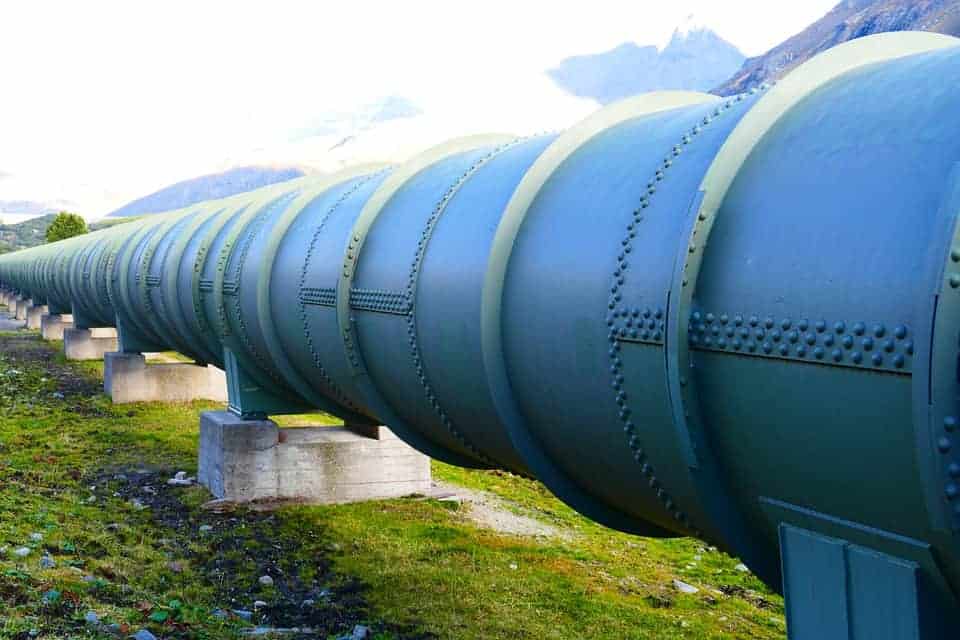Oil’s latest pullback, which saw the North American benchmark West Texas Intermediate (WTI) fall below the psychologically important US$70-per-barrel mark, has sent jitters through global energy markets. While there are signs that oil could weaken further, it shouldn’t deter investors from investing in the energy patch.
One of the best means of playing higher oil is by investing in those companies that provide critical infrastructure and services to the oil patch. These include pipeline companies such as Enbridge Inc. (TSX:ENB)(NYSE:ENB), TransCanada Corporation (TSX:TRP)(NYSE:TRP), and Pembina Pipeline Corp. (TSX:PPL)(NYSE:PBA), which transport Canadian crude to energy markets. These companies didn’t enjoy the same rally that saw many upstream oil producers soar, creating an opportunity for investors.
Now what?
While WTI has gained around 10% since the start of 2018 Enbridge has plummeted by over 20% because of a sharp decline in its performance since the merger with Spectra Energy Corp. Concerns over that performance and the strength of its operations have caused it to become the third most-shorted stock on the TSX, with pundits betting that its value will decline further in value. The tremendous amount of long-term debt that Enbridge has taken on, totaling $91 billion, has also spooked investors, bolstering its attractiveness to short sellers.
Nonetheless, Enbridge is North America’s leading energy infrastructure company. It’s responsible for transporting over a quarter of all crude produced in North America. The length and breadth of its pipeline network, which reaches as far as the Gulf of Mexico, means that it is a critical player in the North American energy industry. The decline in its first-quarter 2018 performance, when Enbridge reported earnings per share of $0.26, which was less than half of what it was a year earlier, can be primarily attributed to additional costs arising out of the merger. Higher oil will see greater demand for the utilization of Enbridge’s pipeline and storage assets, as upstream oil producers ramp up production to take advantage of firmer prices.
The company has an impressive portfolio of over $19 billion of projects under development across the full spectrum of its operations, including expanding its liquids and gas pipelines, midstream operations, and renewable energy business. Enbridge’s commitment to future-proofing its business by bolstering its renewable energy operations makes it even more attractive. This is enhanced by its long history of dividend increases, which sees Enbridge yielding over 6%.
TransCanada has lagged behind Enbridge for some time primarily because of the issues surrounding the contentious Keystone XL pipeline, although the Trump administration eventually approved the pipeline. The company’s market value hasn’t been hit as hard as Enbridge’s, dropping by only 13% for the year to date.
What makes TransCanada attractive is its ability to grow earnings and unlock value. It reported strong first-quarter results, where net income shot up by a healthy 12% year over year, which was primarily driven by the growth projects that entered service over the last 12 months.
This solid bump in earnings occurred despite TransCanada selling its North East U.S. power assets for US$2.1 billion in June 2017. The proceeds of that sale were used to strengthen its balance sheet by retiring a significant portion of debt.
TransCanada is also focused on developing its assets and expanding its pipeline capacity with $21 billion of projects under development and $11 billion expected to commence operations by the end of 2018. That will give earnings a solid boost, especially with Canadian drillers ramping up the tempo of operations to take advantage of higher oil prices. While investors wait for TransCanada’s stock to appreciate, they will be rewarded by its regular and sustainable dividend, which yields just under 5%.
Finally, there is Pembina, which also reported some solid first-quarter results, driven by its needle-moving $9.7 billion purchase of Veresen Inc. in 2017. This deal significantly expanded Pembina’s pipeline network and storage facilities.
For the first quarter, Pembina’s earnings popped by an impressive 23%, driven by a 38% increase in operating volume across the company’s network. It also has $1.9 billion of projects under development, which will bolster Pembina’s capacity and give earnings a healthy lift as they are completed and commissioned. While investors wait for that to translate into a higher stock price, they will receive Pembina’s regular, sustainable dividend, which yields 5%.
So what?
All three companies offer an advantageous means of cashing in on firmer oil, but Enbridge appears to be the most attractively valued at this time. Once it finishes digesting the purchase of Spectra Energy and aligning its corporate structure to unlock greater value, its earnings and stock should appreciate significantly.









